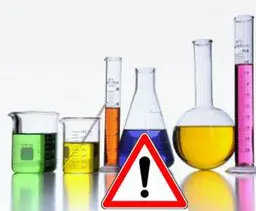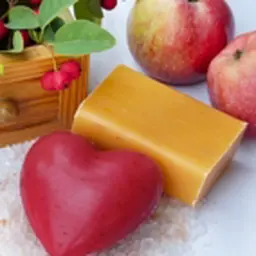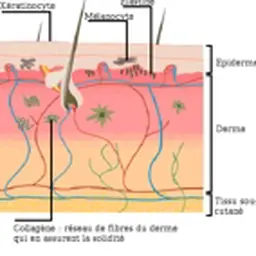
As a cosmetic product, a deodorant is designed to minimize or mask an unpleasant body odor due to perspiration. Not to be confused with antiperspirants, which interact in a very different way and the formula of which are also very different.
A deodorant may be available with different formats:
• roll-on ball, small and sober
• stick, wide, often designed for men’s hands
• spray, rarer but still used for organic cosmetics thanks to its environment-friendly image
•
spray can
, often leading to a dry and wide spray
Every format leads to specific formulae, but the main active ingredients are similar, whatever the format (choosing a format is generally a personal and practical choice).
For a better efficiency, a deodorant may be effective at several causes, through different active ingredients.
Antibacterial agents
Spread the word, perspiration per se does not have an unpleasant odor. Bacteria, which are always present on our skin, transform perspiration and give rise to these unpleasant, even sometimes horrific odors we want to fight.
Antibacterial
agents are there for that purpose.
Among them, some
preservatives
are used, such as
Triclosan
, efficient, but which is a target about its safety of use, especially by the European
SCCS
.
Other kinds of substances, more innocuous, are available to the cosmetic industry to replace it:
• ingredients produced by microbiology (fermentation of several raw materials): Candida Bombicola/Glucose/Methyl Rapeseedate Ferment, Aspergillus/Camellia Sinensis Leaf Ferment Extract, Lactobacillus/Wasabia Japonica Root Ferment Extract …
• derivatives from amino acids: Capryloyl Glycine …
• vegetable extracts: cinnamon bark (Cinnamomum Zeylanicum Bark Extract), lichen (Usnea Barbata Extract), hop (Humulus Lupulus Extract), neem bark (Melia Azadirachta Bark Extract) …
Deodorant agents
As it may be guessed after their name, they are used as masks against unpleasant odors, and may have several origins:
• Synthetic: Acetyl Tributyl Citrate, Triethyl Citrate, Zinc Ricinoleate, Phenetyl alcohol …
• Natural: Mint (Mentha Piperita Extract, Mentha Piperita Water), Geranium (Pelargonium Graveolens Water) …
Scented or perfuming agents
They are used, thanks to their pleasant odor: in other words, cure evil with good. Here, the main ingredients are
essential oils
, which, added to their nice and agreeable
fragrance
, give deodorants their
antibacterial
qualities.
Astringent agents
They tighten the pores of skin, helping in reducing perspiration. Many are produced by vegetable: angelica (Angelica Archangelica Leaf Extract), birch leaf (Betula Alba Leaf Extract), tea (Camellia Sinensis Leaf Extract) or cinnamon (Cinnamomum Zeylanicum Bark Extract) are also
antimicrobial
agents, cypress bark (Cupressus Sempervirensbark Extract) or willow bark (Salix Alba Bark Extract), horsetail (Equisetum Arvense Leaf Extract), hamamelis (Hamamelis Virginiana Water), mallow (Malva Sylvestris Extract), sage (Salvia Officinalis Extract) …
Other more powerful
astringent
agents may have an
antiperspirant
effect, meaning that they do not minimize, but prevent the perspiration process, during 24 to 48 hours. This applies to all the aluminium salts … that should never be used in "pure" deodorants, but only in products claimed as an antiperspirant.
Alum, even natural, shall be classified as such.
Absorbing agents
They are used in addition to the other active ingredients to minimize moisture on the surface of the skin; they belong to two "families":
• Mineral: Alumine (Alumina), Talc, Clays (Bentonite, Hectorite, Illite, Kaolin …), Silica …
• Vegetable: mainly starch (oat: Avena Sativa Starch, corn: Zea Mays Starch, rice: Oryza Sativa starch) …
Alcohol
Though the last one in this list, it is an important ingredient in many deodorants’ formulae, due to its
antiseptic
,
astringent
and freshening qualities.
Nevertheless, its use in such a product may make userswonder: a drying and cutaneous
irritating
agent,
Alcohol
may be aggressive towards the
epidermis
, especially after removal of unwanted hair. However, the simplest (and cheapest) formula for a deodorant is a mix of
Alcohol
+
Essential oils
… even if a more complex, and more well tolerated formula is easy to design. Keep in mind that using several essential oils leads to more
allergenic aromatic molecules
!
Also see
• The
Deodorants
evaluated by CosmeticOBS-L'Observatoire des Cosmétiques' experts
• The
Deodorant or antiperspirant
article, in the Choosing the right cosmetics Section












